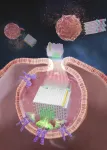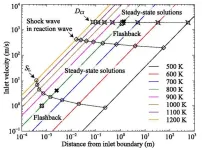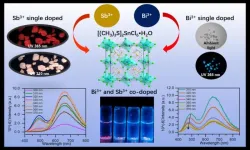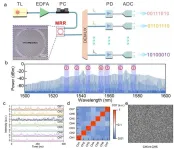By Benjamin Boettner
(BOSTON) — Therapeutic cancer vaccines are a form of immunotherapy in the making that could not only destroy cancer cells in patients, but keep a cancer from coming back and spreading. Multiple therapeutic cancer vaccines are being studied in clinical trials, but despite their promise, they are not routinely used yet by clinical oncologists to treat their patients.
The central ingredient of therapeutic cancer vaccines is antigens, which are preferentially produced or newly produced (neoantigens) by tumor cells and enable a patient’s immune system to search and destroy the cancerous cells. In most cases, those antigens cannot act alone and need the help of adjuvant molecules that trigger a general alarm signal in immune cells known as antigen-presenting cells (APCs). APCs internalize both antigen and adjuvant molecules and present the antigens to different types of T cells. Those T cells then launch an immediate attack against the tumor, or preserve a longer-lasting memory of the tumor for future defense.
A cancer vaccine’s effectiveness depends on the level and duration of the “alarm” its adjuvants can ring in APCs. Previously, researchers found that delivering adjuvant and antigen molecules to APCs simultaneously using nanostructures like DNA origami can increase APC activation. However, none of these approaches systematically investigated how the number and nanoscale arrangement of adjuvant molecules affect downstream tumor-directed immunity.
Now, a research team at the Wyss Institute at Harvard University, Dana-Farber Cancer Institute (DFCI), Harvard Medical School (HMS), and Korea Institute of Science and Technology (KIST) has created a DNA origami platform called DoriVac, whose core component is a self-assembling square block-shaped nanostructure. To one face of the square block, defined numbers of adjuvant molecules can be attached in highly tunable, nanoprecise patterns, while the opposite face can bind tumor antigens. The study found that molecules of an adjuvant known as CpG spaced exactly 3.5 nanometers apart from each other resulted in the most beneficial stimulation of APCs that induced a highly-desirable profile of T cells, including those that kill cancer cells (cytotoxic T cells), those that cause beneficial inflammation (Th-1 polarized T cells), and those that provide a long-term immune memory of the tumor (memory T cells). DoriVac vaccines enabled tumor-bearing mice to better control the growth of tumors and to survive significantly longer than control mice. Importantly, the effects of DoriVac also synergized with those of immune checkpoint inhibitors, which are a highly successful immunotherapy that is already widely used in the clinic. The findings are published in Nature Nanotechnology.
“DoriVac’s DNA origami vaccine technology merges different nanotechnological capabilities that we have developed over the years with an ever-deepening knowledge about cancer-suppressing immune processes,” said Wyss Core Faculty member William Shih, Ph.D., who led the Wyss Institute team together with first-author Yang (Claire) Zeng, M.D., Ph.D.. “We envision that in the future, antigens identified in patients with different types of tumors could be quickly loaded onto prefabricated, adjuvant-containing DNA origami to enable highly effective personalized cancer vaccines that can be paired with FDA-approved checkpoint inhibitors in combination therapies.” Shih is also a Professor at HMS and DFCI’s Department of Cancer Biology and, as some of the other authors, a member of the NIH-funded cross-institutional “Immuno-engineering to Improve Immunotherapy” (i3) Center based at the Wyss.
DNA origami rationale
The CpG adjuvant is a synthetic strand of DNA made up of repeated CpG nucleotide motifs that mimic the genetic material from immune cell-invading bacterial and viral pathogens. Like its natural counterparts, CpG adjuvants bind to a “danger receptor” called TLR9 in immune cells, which in turn induces an inflammatory (innate) immune response that works in concert with the antigen-induced (adaptive) immune response.
“We knew from previous work that to trigger strong inflammatory responses, TLR9 receptors need to dimerize and aggregate into multimeric complexes binding to multiple CpG molecules. The nanoscale distances between the CpG-binding domains in effective TLR9 assemblies revealed by structural analysis fell right into the range of what we hypothesized we could mirror with DNA origami structures presenting precisely spaced CpG molecules,” explained Zeng, who was an Instructor in Medicine at the time of the study and now is a senior scientist at DFCI and Harvard Medical School (HMS). In addition to Shih, Zeng was also mentored on the project by senior authors Ju Hee Ryu, Ph.D., a Principal Researcher at KIST, and Wyss Founding Core Faculty member David Mooney, Ph.D., who also is Professor at Harvard John A. Paulson School of Engineering and Applied Sciences (SEAS), and one of the i3 Center’s Principal Investigators.
Zeng and the team fabricated DoriVac vaccines in which different numbers of CpG strands were spaced at 2.5, 3.5, 5, or 7 nanometers apart from each other on one face of the square block, and a model antigen was attached to the opposite face. They protected their structures from being degraded in the body using a chemical modification method that Shih’s group had developed earlier. When internalized by different types of APCs, including dendritic cells (DCs), which orchestrate tumor-directed T cell responses, the DoriVac vaccines improved the uptake of antigens compared to controls consisting of free antigen molecules. A CpG spacing of 3.5 nanometers produced the strongest and most beneficial responses in APCs, and significantly outperformed a control vaccine containing only free CpG molecules. “We were excited to find that the DoriVac vaccine preferentially induced an immune activation state that supports anti-tumor immunity, which is what researchers generally want to see in a good vaccine,” said Zeng.
Besides spacing, the numbers of CpG molecules in DoriVac vaccines also mattered. The team tested vaccines containing between 12 to 63 optimally spaced CpG molecules and found that 18 CpG molecules provided the best APC activation. This meant that their approach can also help limit the dosage of CpG molecules and thus minimize commonly observed toxic side effects observed with adjuvants.
Gained in (tumor) translation
Importantly, these in vitro trends translated to in vivo mouse tumor models. When prophylactically injected under the skin of mice, DoriVac vaccines accumulated in the closest lymph nodes where they stimulated DCs. A vaccine loaded with a melanoma antigen prevented the growth of subsequently injected aggressive melanoma cells. While all control animals had succumbed to the cancer by day 42 of the experiment, DoriVac-protected animals all were alive. DoriVac vaccines also inhibited tumor growth in mice in which the formation of melanoma tumors was already underway, with a 3.5 nanometer spacing of 18 CpG molecules again providing maximum effects on DC and T cells, and the strongest reduction in tumor growth.
Next, the team asked whether DoriVac vaccines could also boost immune responses produced by small “neoantigens” emerging in melanoma tumors. Neoantigens are ideal targets because they are exclusively made by tumor cells. However, they often are not very immunogenic themselves, which make highly effective adjuvants an important component in neoantigen vaccines. A DoriVac vaccine customized with four neoantigens enabled the researchers to significantly suppress growth of the tumor in mice that produced the neoantigens.
Finally, the researchers asked whether DoriVac could synergize with immune checkpoint therapy, which reactivates T cells that have been silenced in tumors. In mice, the two therapies combined resulted in the total regression of melanoma tumors, and prevented them from growing back when the animals were exposed to the same tumor cells again four months later. The animals had built up an immune memory of the tumor. The team obtained a similar vaccination efficiency in a mouse lymphoma model.
“We think that DoriVac’s value for determining a sweet spot in adjuvant delivery and enhancing the delivery and effects of coupled antigens can pave the way to more effective clinical cancer vaccines for use in patients with a variety of cancers,” said Zeng. The team is currently translating the DoriVac platform toward its clinical application, which is supported by the study’s assessment of vaccine distribution and vaccine-directed antibodies in mice, as well as cytokines produced by immune cells in response to the vaccines in vivo.
“The DoriVac platform is our first example of how our pursuit of what we call Molecular Robotics – synthetic bioinspired molecules that have programmable shape and function – can lead to entirely new and powerful therapeutics. This technology opens an entirely new path for development of designer vaccines with properties tailored to meet specific clinical challenges. We hope to see its rapid translation into the clinic,” said Wyss Institute Founding Director Donald Ingber, M.D., Ph.D., who is also the Judah Folkman Professor of Vascular Biology at HMS and Boston Children’s Hospital, and the Hansjörg Wyss Professor of Bioinspired Engineering at SEAS.
Other authors on the study are Olivia Young, Christopher Wintersinger, Frances Anastassacos, James MacDonald, Giorgia Isinelli, Maxence Dellacherie, Miguel Sobral, Haiqing Bai, Amanda Graveline, Andyna Vernet, Melinda Sanchez, Kathleen Mulligan, Youngjin Choi, Thomas Ferrante, Derin Keskin, Geoffrey Fell, Donna Neuberg, Cathrine Wu, and Ick Chan Kwon. The study was funded by the Wyss Institute’s Validation Project and Institute Project programs, Claudia Adams Barr Program at DFCI, Korean Fund for Regenerative Medicine (award #21A0504L1), Intramural Research Program of KIST (award #2E30840), and National Institutes of Health (under the i3 Center supporting U54 grant (award #CA244726-01).
END






